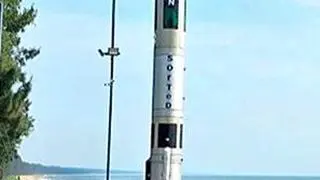Guess what the crucial raw materials for running a profitable steel company are? Iron ore, coke, a lot of energy and data.
Tata Steel, for one, will never face any shortage or cost spike of the last. And, with artificial intelligence (AI), the company is squeezing data to extract profits.
Around 2018, the $33 billion steel major set itself a somewhat direction-giving target of achieving EBIDTA savings of $2 billion only from using its data, over an unspecified number of years. Today, it reckons, it has milked $1.4 billion and is all set to move the goal post to a higher level of ambition.
One does not readily connect AI with something as ‘physical’ as steel making, but Jayanta Banerjee, Chief Information Officer at Tata Steel, explains how data and AI have become as important as iron ore and coke.
Banerjee is a steel-outsider. An IT professional, he wrote a paper on AI back in the early 1990s before joining Tata Consultancy Services, where he worked for a quarter century in TCS’s overseas offices.
In 2018, Tata group’s Chairman, Natarajan Chandrasekaran, hand-picked a few IT wizards from TCS and put them into various other companies of the group. Banerjee ended up in Tata Steel.
“I knew nothing about steel,” says Banerjee. But he knew data, and Tata Steel is always drowned in a flood of data.
A date with Data
Steel making is a heavily sensorised business; Tata Steel uses several lakhs of sensors in its five (Indian) plants. Most of them are electronic, but some chemical and acoustic sensors too. In 2018, the company had about 6 terabytes of data; today it has 5.2 petabytes (roughly, thousand times more).
Humongous amounts of data implies you need to keep them somewhere. That is where ‘cloud’ enters the picture. “We invested heavily in cloud in 2018 and 2019,” says Banerjee, adding, “today 95 per cent of my estate is on multiple clouds.” The company uses the cloud services of Amazon, Google, Microsoft, Tata Communications and IBM. Multiple providers are necessary for reasons of security and building redundancy.
So, Tata Steel had data and cloud, and Banerjee brought in AI, to make use of the former. Banerjee calls data, cloud and AI ‘three macros’. An in-house team developed about 260 algorithms on which the business runs. Alongside, the company scrapped the individual control rooms in its various mines and plants — each blast furnace had its own control room — and consolidated them under one IT building, the integrated remote operations center (iROC), in Jamshedpur. This brought in an added advantage — employees didn’t have to be transferred to different places, as all the operations of the company are controlled from here.
AI is used a lot in decision making. Take raw material procurement for example. As Banerjee explained, questions such as which raw material to buy; when, where and what is the best route to ship it into the plant;how to efficiently allocate the raw materials to different plants, are best answered by AI models.
Furthermore, AI is used in optimising chemical mix in blast furnaces. This is important because when raw materials like coal are transported across long distances, some impurities (moisture, foreign materials) will inevitably seep in. The quality of the raw material will determine what else should go into the furnace — how much manganese, zinc, among others. “Impurities in the output product will be much lesser if I have better chemistry upstream,” explains Banerjee adding that fine-tuning the mix is done by AI.
Fault finder
Further along the production line, AI also helps in identifying the origin of a defect. All products are fully imaged to find defects (crack, bubble) before it becomes final . If a defect shows up in an image, the product is not supplied to the customer. The image is then image is compared with an outsourced library of defect images, to see which one it resembles the most. This gives them an idea of what could have gone wrong. Once the origin of the defect is known, it is created on the ‘digital twin’ of the plant, where an AI model learns about the defect and its origin — it won’t let it happen another time.
All this happens on the production side. Tata Steel also uses AI in a whole lot of areas like forecasting and planning, HR and customer and financial analytics as well.
Banerjee keeps a sharp eye on the costs. Technology is used only when it positively impacts at least one of yield, energy, throughput, quality and productivity. Over the years, cost-benefit has improved. “When I started the transformation (around 2018) it used to be in the range of 1:4.3, today we’re almost running 1:10. Every dollar I spend, I get $10 back,” he says.








Comments
Comments have to be in English, and in full sentences. They cannot be abusive or personal. Please abide by our community guidelines for posting your comments.
We have migrated to a new commenting platform. If you are already a registered user of TheHindu Businessline and logged in, you may continue to engage with our articles. If you do not have an account please register and login to post comments. Users can access their older comments by logging into their accounts on Vuukle.